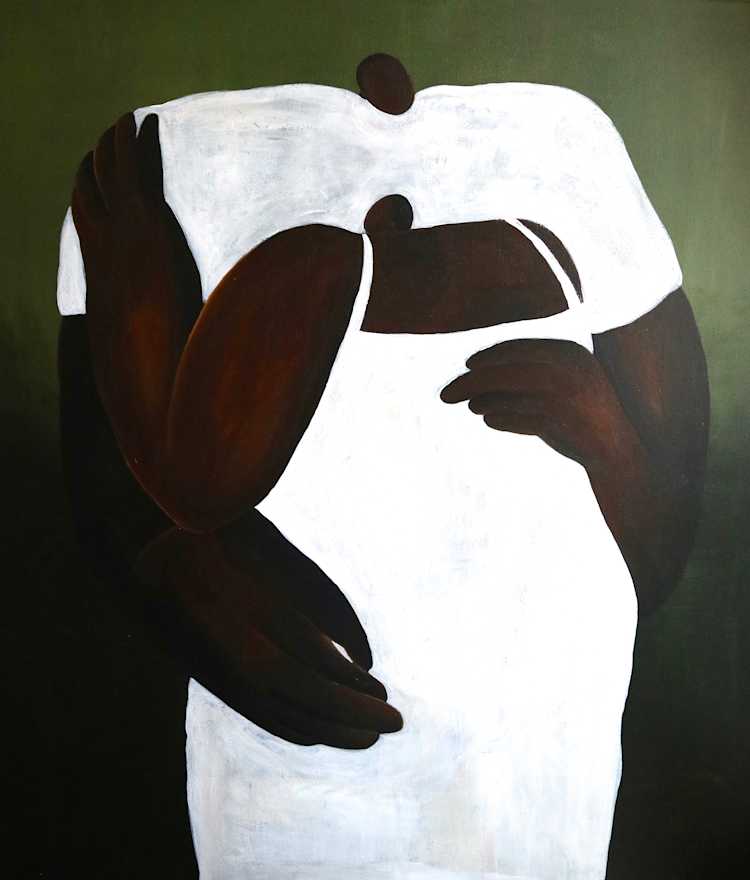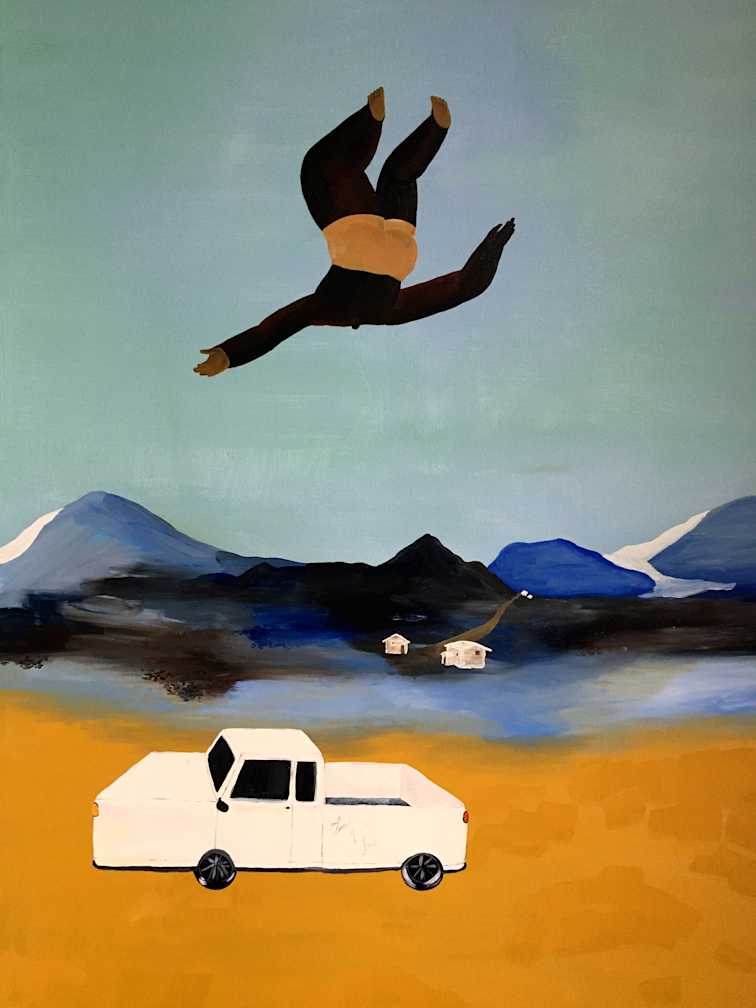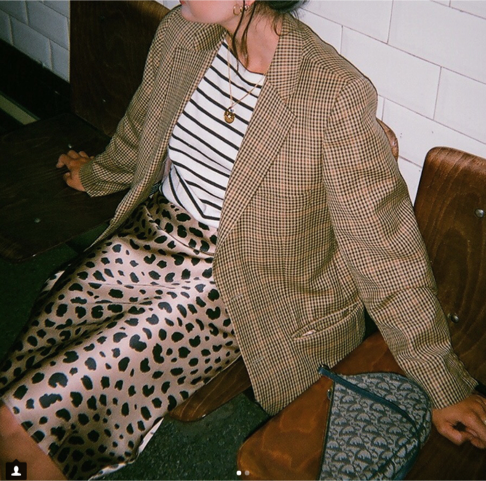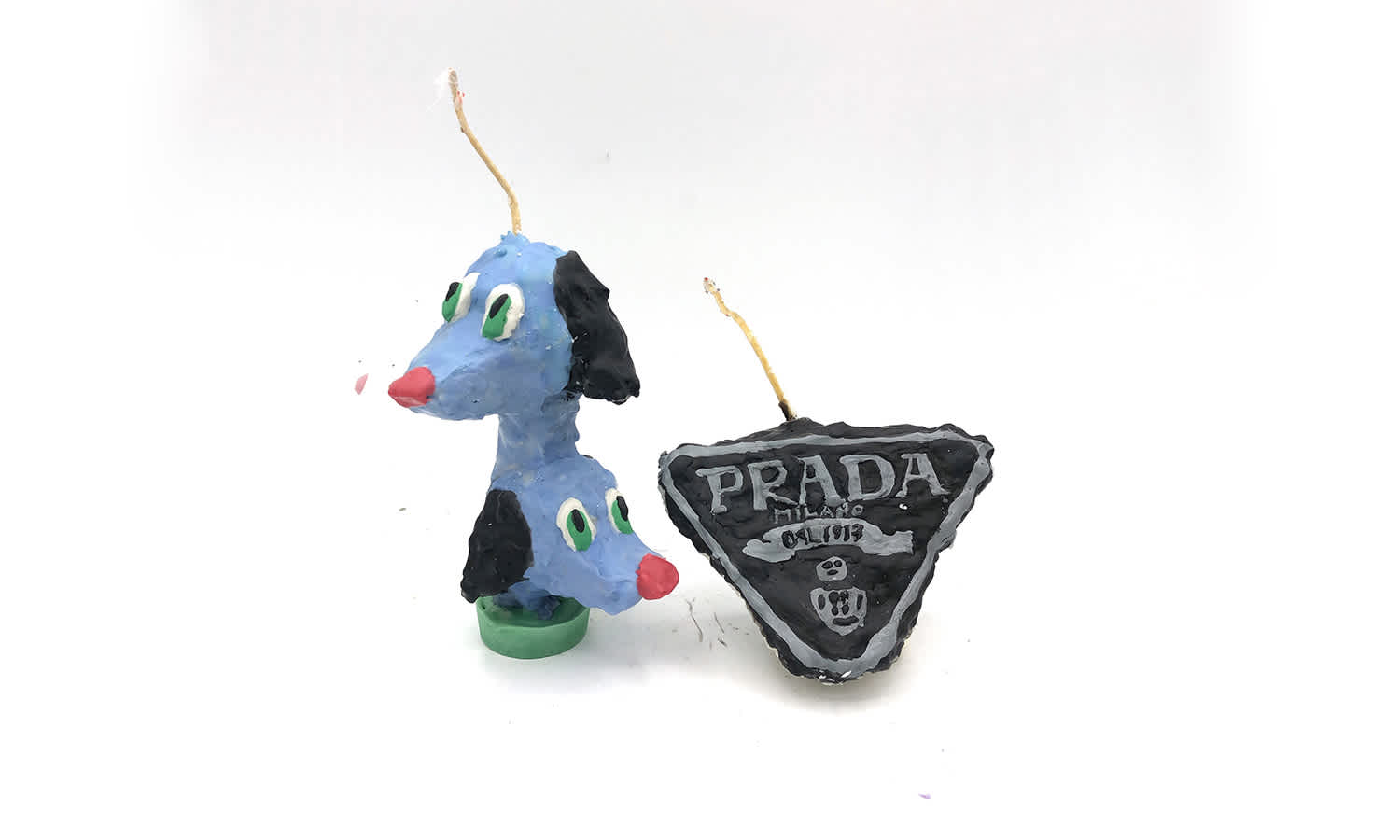
How are you doing right now?
Bahati: Right now? I’m all good, but it has been a crazy roller coaster of surviving indeed! A lot of hurt and standing still in the unknown, but it’s a new year so I’m definitely embracing all of it and feeling positive, despite all.
Agreed, completely. You’ve spoken in the past on how your childhood and mother’s life in the Congo are central influences on your work. Could you expand on that?
Bahati: I think we all know the term trans-generational trauma. I feel like my mother passed a lot of it on to me. However, not only the trauma, but also the general pride and wisdom of being an African black woman.
I’ve been trying to understand my sense of belonging, navigating spaces.
Where does my sense of home arise? I’m always led back to my African heritage as what I feel most connected to, physically and mentally.
I know, closest to my heart, I’m an artist. And secondly, I’m my mother’s daughter. It just makes sense to me. There’s no other way than to manifest it in and through my art.
Growing up, my mother never really felt the need to share a lot with me and my siblings. Looking at us as only European, she thought we cared as little as her new surroundings.
I was very young when we moved to Belgium, yet nowhere has ever felt more like home than the African continent.
Her seeing me as a grown woman, proud of my heritage, braiding my own hair and cooking traditional Congolese food. The way she looks at my work, as well as just visiting my apartment and seeing books mostly written by African American writers, magazines with black women on the cover.
It only motivates, knowing I can make her feel seen the same way it did for myself while painting.

In a previous interview you did, you mention that at the beginning, art was a way for you to connect with yourself but now it has extended to wanting to create work that Black people feel seen in. As a kid making art versus as an adult, what pieces of that experience have felt the same throughout and what pieces have shifted?
Bahati: Though I have been into arts for as long as I can remember, I’ve only been painting a little over four years now. The shift in my work happened recently, April 2020. A lot of it had to do with the first lockdown in March during Black History Month here. I had the time to reflect and process previous traumas.
At first, most of my work was all about reassurance and comforting myself and parts of my identity. It was therapeutic, getting in touch with my soft side and showing that vulnerability. But the past three years were a big wake up call into realizing a lot of people blindly believe they’re ‘woke’ yet are still very much ignorant and comfortable, benefiting off of their privilege.
When the murder on George Floyd happened, it aroused a lot of anger and pain. I completely broke down. The doctor put me on bed rest for a month.
Painting helped and still helps to ease my mind. I wanted to do the same for the black bodies around me. Uplift and celebrate, while bringing awareness and communicating important topics.
Having one black friend doesn’t make it okay for you to tell the minority at your job to stop making you aware of microaggressions. Why are you still telling people of color to diminish their hurt and pain, so you can keep ignoring your colonized mind? BIPOC aren’t the ones making you uncomfortable, the confrontation with your own mind is.
It’s up to the viewer to respond to this or to only see the soft and tender side to the piece.

You strike a really captivating balance of being direct in your message while also remaining gentle (I think through color palette and composition). What draws you to create work in this way?
Bahati: Just me as a person, I think. I consider myself to have a very calm appearance. Whether it is me expressing myself through visual art or through words, those are two things I can’t really disconnect from each other.
The disquieting feelings mostly happen on the inside, regardless of how I got carried away on the previous question (laughs).
Every human being is a collage with different layers, and I think it’s very important to be kind - not only towards others, but towards yourself as well. Especially as a black woman.
Being a black female artist makes it hard not to be political in some shape or form.
In my experience, being very loud about it only draws attention to your anger. Reading a ton of Audre Lorde definitely has helped throughout that process.
In a separate interview, you mention your art school experience wasn’t very positive, due to lack of diversity, stereotyping, etc. Do you feel like art as an institution is creating an honest space for diverse stories?
Bahati: Being a young woman, evolving and trying to find your place in the world is one thing. Being a young woman of color is a whole other experience, meaning there weren’t any examples to identify with apart from family and friends.
You really need to do your own research and guide yourself into finding women of color to identify with or to look up to. Don’t get me wrong, I’m aware of my privilege being a light skinned black woman, but that doesn’t make it any less hard when you’re going through all the feels.
I got the remark that I needed to study the history of the arts more. Next it was, “What about Africa? Maybe you should go a bit deeper into that?” Then it was, “No, that’s too much Africa! You’re still a Belgian citizen now. And why are your self portraits all in black and white, try using color next time since color is the most important thing about you.”
On top of my predominantly white environment, I had four white, male teachers telling me all of this, plus the contemporary society we live in and my personal experience of not feeling historically welcome in museum spaces.
With a predominantly white environment, structural racism, and microaggressions on a daily basis—I mean, my patience runs deep but—after a year I wasn’t very motivated to keep going to class. (Laughs) Yeah, I was done.
So, is there an honest space? Back then I would’ve said no, leaning more towards dismissive. Now, with all that I’ve been blessed with the past few months, I can honestly say there is. Yet I’m still, unfortunately, referring to a minority of spaces.

I love the scale and proportions of your work. The subjects confidently fill the space of the canvas and the scales of your pieces themselves are quite large. What is the way you’d most like your work to be experienced?
Bahati: Definitely through exhibitions, which is a better way to interact and communicate in my opinion. For those who’ve seen my art, I’ve been getting the response that it looks so much better and even more moving in real life than on Instagram.
But due to the fact that I didn’t finish my studies, it has been hard to connect and throw myself into the art scene here [Belgium]. However, since last summer after my WePresent article came out, I’ve been getting some really nice new project offers for this year. So I’m very grateful for social media and the lockdown, putting everyone at home, scrolling. (Laughs)
I have a solo exhibition at La Causa Art Gallery, in June of this year. If all goes well, another one at HOME in London (January 2022). Plus, some really nice collaborations.
Could you share some of your favorite artists at the moment? What is it about their work that attracts you?
Bahati: It keeps changing, there are so many talented people out there. I’m really into photography at the moment, mainly because it gives the sense of traveling. So I’d say Renell Medrano’s newest work and Sory Sanlé’s 70’s portraits. I discovered Cassi Namoda’s work a few months ago and I keep falling in love with it. Especially her use of color, everything looks so beautiful and peaceful.
More stories

Maria Bernad: On Fashion

